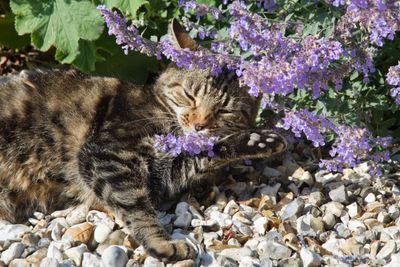Is Catnip Winter Hardy?
Catnip cold tolerance is pretty high and it grows well in zones 3 to 9. However, an unusually cold winter or colder climates can present a problem for catnip grown outdoors. If you want it to come back healthy and productive each spring, it may be necessary to provide some protection and extra care for catnip plants in winter. This is especially important if you live in the northern, colder areas of its growing region.
Catnip Winter Care
If you grow catnip in a container, you can simply bring it indoors for the winter. Give it a cooler spot without too much sun and water only occasionally. If, however, your catnip is growing in beds outdoors, you should prepare it for the winter months. In late fall, prep your catnip for winter by trimming it back. Cut the stems down to just a few inches (8 cm.), and especially trim back any new growth so it won’t get damaged in the cold. Give the plant a last, long drink of water and then don’t water it over the winter. For catnip frost protection in locations where you get some very cold weather, you can use a cloche to cover the plant. Be sure to keep an eye on it though, and remove or shade it on sunny, warmer days so your catnip doesn’t get too hot. Avoid fertilizing your catnip as winter sets in. This will only encourage new growth that can get damaged by the colder weather in winter. Also, avoid using too much mulch. Some mulch can help keep moisture and heat in the soil, but too much will prevent the sun from warming it. If you take these protective steps and avoid a couple of easy mistakes, your catnip plant should come back in the spring; big, healthy, and growing.
